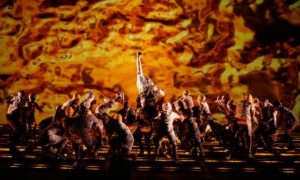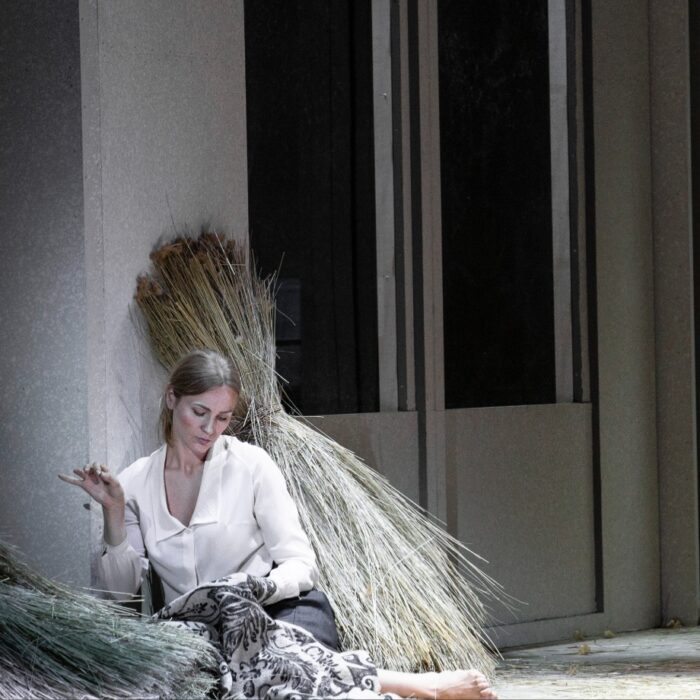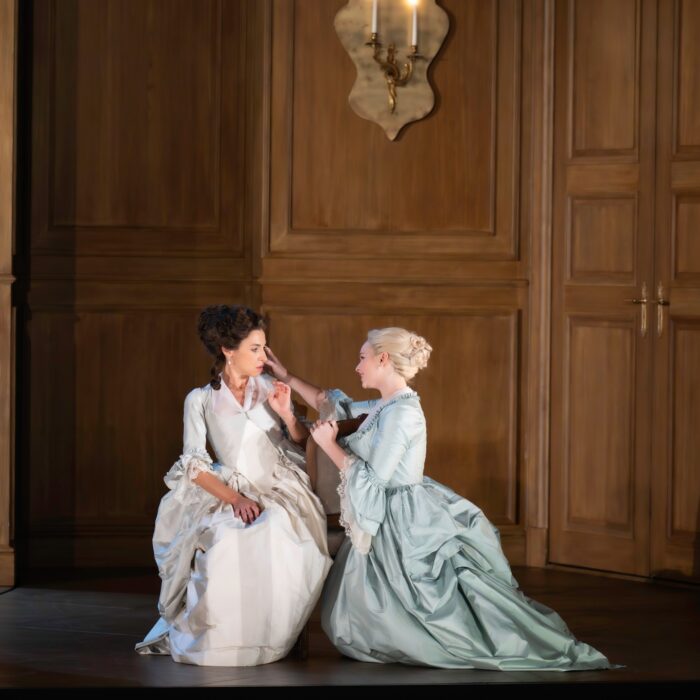
The Ring in San Francisco – Francesca Zambello & Production Designer Michael Yeargan Head Panel on Wagner the Environmentalist
By Lois SilversteinSan Francisco Opera is in the midst of its month-long festival dedicated to Wagner’s “Ring Cycle.” In the coming weeks, Lois Silverstein will explore her experience not only revisiting the 2018 opera production, but several of the events and panels presented by the company.
The landscape of the American West became the environmental directive for the 2018 Ring for Francesca Zambello. Evolving from the production she did for San Francisco Opera and Washington National Opera in 2011, Zambello and Stage Designer Michael Yeargan discussed how they adapted Wagner’s master myth of the destruction of the gods to the destruction of the natural environment today by technology with Moderator Kirsten Paige, Stanford Lecturer in Music.
The power struggles in the Ring, Zambello said, fit particularly well, with how technology dominates and determines what happens in our natural environment. Hence, an American Ring.
As with Wotan, ruling of the world is the ruling of the machine.
Yeargan said that the creative focus was fed by current events of innumerable instances; “our process of developing the cycle of the opera was like being in a ‘living newspaper.’ We have a trailer park and a polluted Rhine; we have sludge piles that exist outside of New York in projection; we have dead trees and polluted air in lighting and scenery; we have broken contracts on every level, as well as broken promises to keep the human and natural environment in tact. We show, as Wagner did through his mythic structure, how industrialism, i.e., lust for power, greed, mechanization, has brought our human value and capacity to love into jeopardy.”
The two spoke with a great love of their development of this production. Not only the results but the process of making their ideas come to life was inspirational. Every facet of the production, as well as the enthusiastic crew in San Francisco, for example, brought forth new opportunities to bring their ideas of the natural world, and concomitantly our human one, falling into the hands of greedy merchants of the machine. They spoke of being surprised by what they could invent, ways they discovered how to suggest how sea life is being killed; how plastic bottles pollute oceans and rivers and streams; how extreme climate change has begun to burn through the sensitive layers of human contact. Yeargan also mentioned how they learned what products not to use – i.e., paints, glues, that would contribute to contamination backstage. All materials used were aimed to improve the atmosphere backstage.
They would choose what Yeargan called a “color envelope” to hold a particular cluster of ideas and develop a particular idea through a palette of colors spun from it, i.e., earth colors, greens and browns, or fire, oranges or, water, blues, and grays, or “colorlessness,” color draining away from what had been a natural habitat. This helped to unify the text and the subtext for which Wagner aimed. The Machine Monster, i.e., serpent is a perfect representation of the attempt of the hero to destroy the destroyer.
Throughout the production, everyone tells his or her version of the same story. Every facet of the four opers – characters, the motifs, visual and audible effects, including swords, spears, steam, fire, smoke, air, trailer park, garbage compactors, green garbage bags – become part of the tapestry through which this tale is told. Whether they focused on the east or the west, New York or California, the extensive dialogue unfolds Danger! And we, the audience, what shall we do?
Categories
Special Features

